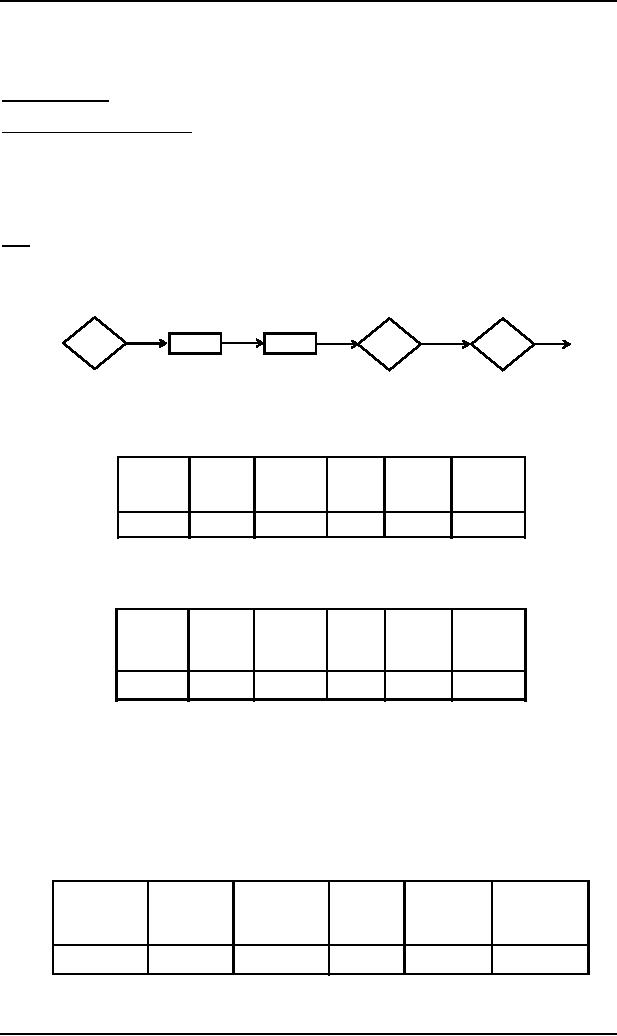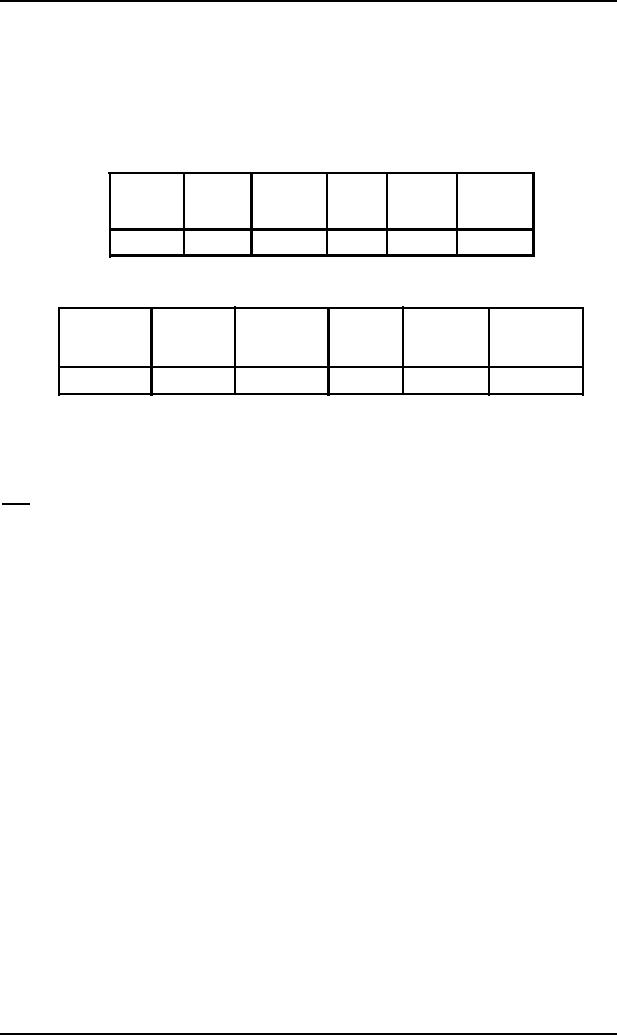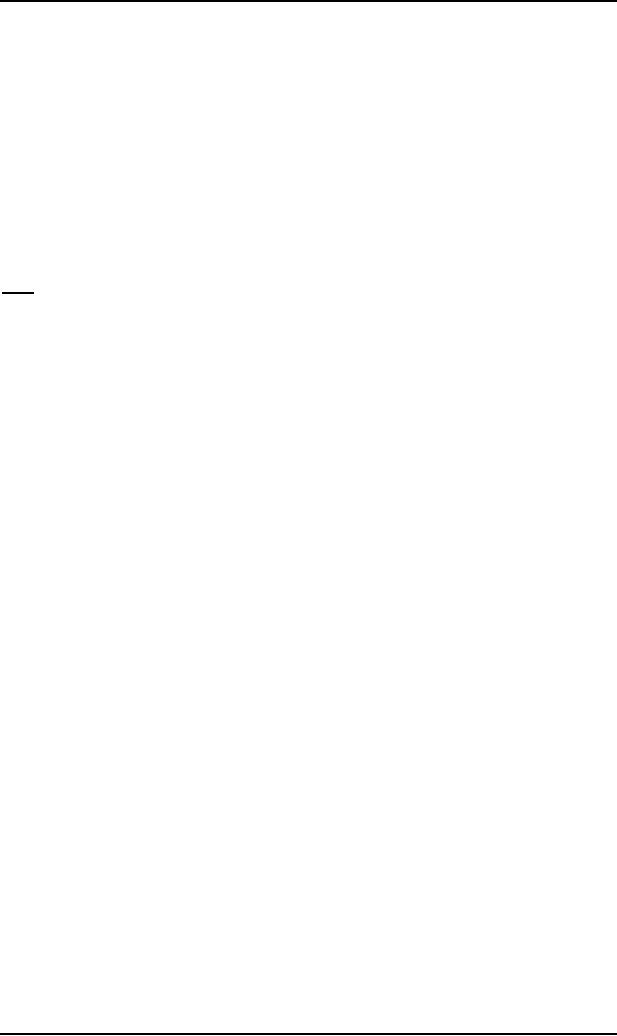 |
Row language, Nonterminals |
| << Conversion Form, Joints of the machine |
| Non-Context-Free language, Pumping lemma for CFLs >> |

Theory of
Automata
(CS402)
Theory of
Automata
Lecture
N0. 42
Reading
Material
Introduction
to Computer Theory
Chapter
15
Summary
Row
language, nonterminals defined from
summary table, productions defined by
rows, rules for
defining
productions,
all possible productions of CFG
for row language of the
example under consideration,
CFG
corresponding to
the given PDA
Note
As has
already been discussed that
the Row language is the
language whose
alphabet
� =
{Row1, Row2, ..., Row7}, for
the example under consideration, so to
determine the CFG of Row
language,
the
nonterminals of this CFG are introduced
in the form Net(X, Y,
Z)
where X
and Y are joints and Z is any
STACK character. Following is an
example of Net(X, Y, Z)
a
b
Z
POP
POP
POP
PUSH
a
PUSH
b
If the
above is the path segment
between two joints then, the
net STACK effect is same as
POP Z.
For a
given PDA, some sets of
all possible sentences
Net(X, Y, Z) are true, while
other are false. For
this
purpose
every row of the summary
table is examined whether the
net effect of popping is
exactly one letter.
Consider
the Row4 of
the summary table developed
for the PDA of the
language {a2nbn}
FROM
TO
READ
POP
PUSH
ROW
Where
Where
What
What
What
Number
READ1
HERE
b
a
--
4
The
nonterminal corresponding to the above
row may be written as Net
(READ1, HERE, a) i.e.Row4 is a single
Net
row.
Consider
the following row from an
arbitrary summary
table
FROM
TO
READ
POP
PUSH
ROW
Where
Where
What
What
What
Number
READ9
READ3
b
b
abb
11
which
shows that Row11 is not Net style sentence
because the trip from
READ9 to READ3 does not pop one
letter
form the STACK, while it
adds two letters to the
STACK. However Row11 can be concatenated with
some
other Net
style sentences e.g.
Row11Net(READ3,
READ7, a)Net(READ7, READ1,
b)Net(READ1,
READ8, b)
Which
gives the nonterminal
Net(READ9, READ8,
b), now the whole
process can be written
as
Net(READ9, READ8, b) � Row11Net(READ3,
READ7,a)
Net(READ7,
READ1, b)Net(READ1, READ8,
b)
Which
will be a production in the
CFG of the corresponding row
language.
In general to
create productions from rows of
summary table, consider the
following row in certain
summary
table
FROM
TO
READ
POP
PUSH
ROW
Where
Where
What
What
What
Number
READx
READy
u
w
i
m1m2...mn
then
for any sequence of joint
states S1, S2, ...Sn, the production in
the row language can be
included as
129

Theory of
Automata
(CS402)
Net(READx, Sn, w) � RowiNet(READy, S1, m1)...Net(Sn-1, Sn, mn)
It may be
noted that in CFG, in general, replacing
a nonterminal with string of some other
nonterminals does not
always
lead to a word in the corresponding CFL
e.g.
S
�
X|Y, X
�
ab, Y
�
aYY
Here Y � aYY
does not lead to any
word of the language.
Following
are the three rules of
defining all possible productions of
CFG of the row
language
The
trip starting from START
state and ending in ACCEPT
state with the NET
style
Net(START,
ACCEPT, $) gives the
production of the form S � Net(START,
ACCEPT, $)
From
the summary table the
row of the following
form
FROM
TO
READ
POP
PUSH
ROW
Where
Where
What
What
What
Number
X
Y
anything
z
i
--
Defines
the productions of the form
Net(X,Y,z) � Rowi
For
each row that pushes string
of characters on to the STACK of
the form
FROM
TO
READ
POP
PUSH
ROW
Where
Where
What
What
What
Number
READx
READy
u
w
i
m1m2...mn
then
for any sequence of joint
states S1, S2, ...Sn, the production in
the row language can be
included as
Net(READX,Sn, w) � RowiNet(READY, S1,m1) ...Net(Sn-1, Sn, mn)
It may be
noted that this rule
introduces new productions. It does not
mean that each production of
the form
Nonterminal
�
string of
nonterminals, helps in defining some
word of the language.
Note
Considering
the example of PDA accepting
the language {a2nbn:n=1, 2, 3, ...}, using rule1,
rule2 and rule3
the
possible
productions for the CFG of
the row language
are
S � Net(START,
ACCEPT, $)
Net(READ1, HERE, a) � Row4
Net(HERE,
READ2, a) � Row5
Net(READ2, HERE, a) � Row6
Net(READ2, ACCEPT, $) � Row7
Net(START,
READ1, $) � Row1Net(READ1,
READ1, $)
Net(START,
READ2, $) � Row1Net(READ1,READ2,
$)
Net(START,
HERE, $) � Row1Net(READ1,
HERE, $)
Net(START,
ACCEPT, $) � Row1Net(READ1,
ACCEPT, $)
Net(READ1, READ1, $) � Row2Net( READ1, READ1,
a)Net(READ1,
READ1, $)
Net(READ1, READ1, $) � Row2Net( READ1, READ2,
a)Net(READ2,
READ1, $)
Net(READ1, READ1, $) � Row2Net( READ1, HERE, a)Net(HERE, READ1, $)
Net(READ1, READ2, $) � Row2Net( READ1, READ1,
a)Net(READ1,
READ2, $)
Net(READ1, READ2, $) � Row2Net( READ1, READ2,
a)Net(READ2,
READ2, $)
Net(READ1, READ2, $) � Row2Net( READ1, HERE, a)Net(HERE, READ2, $)
Net(READ1, HERE, $) � Row2Net( READ1, READ1,
a)Net(READ1, HERE,
$)
Net(READ1, HERE, $) � Row2Net( READ1, READ2,
a)Net(READ2, HERE,
$)
Net(READ1, HERE, $) � Row2Net( READ1, HERE, a)Net(HERE, HERE, $)
Net(READ1, ACCEPT, $) � Row2Net( READ1,READ1,a)Net(READ1,ACCEPT, $)
Net(READ1,ACCEPT, $) � Row2Net( READ1,READ2,a)Net(READ2,ACCEPT, $)
Net(READ1, ACCEPT, $) � Row2Net( READ1, HERE, a)Net(HERE, ACCEPT,
$)
Net(READ1, READ1, a) � Row3Net( READ1, READ1,
a)Net(READ1,
READ1, a)
Net(READ1, READ1, a) � Row3Net( READ1, READ2,
a)Net(READ2,
READ1, a)
Net(READ1, READ1, a) � Row3Net( READ1, HERE, a)Net(HERE, READ1, a)
Net(READ1, READ2, a) � Row3Net( READ1, READ1,
a)Net(READ1,
READ2, a)
Net(READ1, READ2, a) � Row3Net( READ1, READ2,
a)Net(READ2,
READ2, a)
Net(READ1, READ2, a) � Row3Net( READ1, HERE, a)Net(HERE, READ2, a)
Net(READ1, HERE, a) � Row3Net( READ1, READ1,
a)Net(READ1, HERE,
a)
Net(READ1, HERE, a) � Row3Net( READ1, READ2,
a)Net(READ2, HERE,
a)
130

Theory of
Automata
(CS402)
Net(READ1, HERE, a) � Row3Net( READ1, HERE, a)Net(HERE, HERE,
a)
Net(READ1, ACCEPT, a) � Row3Net( READ1, READ1,a)Net(READ1,ACCEPT,a)
Net(READ1, ACCEPT, a) � Row3Net( READ1, READ2,a)Net(READ2,ACCEPT,a)
Net(READ1, ACCEPT, a) � Row3Net (READ1,
HERE,a)Net(HERE,ACCEPT,a)
Following
is a left most derivation of a
word of row language
fi Net(START,
ACCEPT, $)
S
...
using
1
fi Row1Net(READ1,
ACCEPT, $)
...
using
9
fi Row1Row2Net(RD1,RD2,
a)Net(RD2,AT,
$)
...
using
20
fi Row1Row2Row3Net(RD1, HERE,a)Net
(RD2,HERE,a)Net(RD2,AT,$)...
using
27
fi Row1Row2Row3Row4Net(HERE, RD2,
a)Net(RD2,
ACCEPT, $)
...
using
2
fi Row1Row2Row3Row4Row5Net(HERE, ACCEPT, $)
...
using
3
fi Row1Row2Row3Row4Row5Row7
...
using
5
Which is
the shortest word in the
whole row language.
It can be
observed that each left most
derivation generates the
sequence of rows of the
summary table, which
are
both joint-
and
STACK-
consistent.
Note: So far
the rules have been
defined to create all
possible productions for the
CFG of the row
language.
Since in
each row in the summary
table, the READ column
contains L and
D
in
addition to the letters of
the
alphabet
of the language accepted by
the PDA, so each word of
the row language generates
the word of the
language
accepted by the given
PDA.
Thus the
following rule 4 helps in completing
the CFG corresponding to the
given PDA
Each
row of the summary table
defines a production of the form
Rowi � a where in
Rowi the READ
column
consists
of letter a.
Application
of rule 4 to the summary
table for the PDA
accepting {a2nbn : n=1,2,3,...} under consideration
adds
the
following productions
Row1 �
L
Row2 � a
Row3 � a
Row4 � b
Row5 �
L
Row6 � b
Row7 �
D
Which
shows that the word
Row1Row2Row3Row4Row5Row7
of the
row language is converted to LaabLD =
abb
131
Table of Contents:
- What does automata mean, Introduction to languages
- Kleene Star Closure, Recursive definition of languages
- Regular Expression, Recursive definition of Regular Expression
- Equivalent Regular Expressions
- Finite Automaton
- Equivalent FAs
- FA corresponding to finite languages
- Examples of TGs: accepting all strings
- Generalized Transition Graphs
- Nondeterminism, Kleene’s Theorem
- Proof(Kleene’s Theorem Part II)
- Kleene’s Theorem Part III
- Concatenation of FAs
- Closure of an FA
- Nondeterministic Finite Automaton, Converting an FA to an equivalent NFA
- NFA with Null String
- NFA and Kleene’s Theorem
- NFA corresponding to Concatenation of FAs
- Distinguishable strings and Indistinguishable strings
- Finite Automaton with output, Moore machine
- Mealy machine
- Equivalent machines
- Mealy machines in terms of sequential circuit
- Regular languages, Complement of a language
- Nonregular languages
- Pumping Lemma
- Pumping Lemma version II
- Pseudo theorem
- Decidability
- finiteness of a language
- Context Free Grammar (CFG), CFG terminologies
- Trees
- Polish Notation (o-o-o)
- Total language tree, Regular Grammar
- Null Production
- Chomsky Normal Form (CNF)
- A new format for FAs
- Nondeterministic PDA
- PDA corresponding to CFG
- Conversion form of PDA
- Conversion Form, Joints of the machine
- Row language, Nonterminals
- Non-Context-Free language, Pumping lemma for CFLs
- Decidablity, Parsing Techniques
- Turing machine